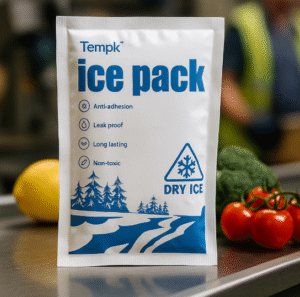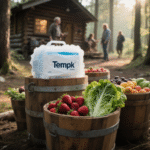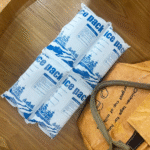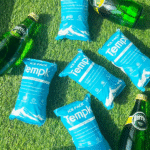Takeaways -chave (2025)
-
Remessas aéreas com gelo seco real deve seguir Aqui está Pi 954 e variações do operador; Os pacotes devem ser ventilado, marcado E 1845, e mostrar Peso de gelo seco líquido em kg. Use o 2025 Lista de verificação de aceitação da IATA.
-
NÓS. Regras de terra/ar requer embalagem ventilada em 49 Cfr 173.217; Os passageiros que transportam gelo seco são limitados a 2.5 kg (5.5 Libra) por pessoa com aprovação da companhia aérea.
-
Quanto usar: planejar ~ 5-10 lb. (2.3–4,5 kg) por 24 horas em um remetente bem isolado; Ajuste para pista/estação. (Universidade & As orientações do governo se alinham nesse intervalo.)
-
A experiência da página afeta a visibilidade: em 2025 INP substituiu o FID nos vitais da Web central; objetivo para LCP ≤ 2.5 s, INP ≤ 200 EM, CLS ≤ 0.1 no 75º percentil.
-
Políticas de spam do Google: o Marchar 2024 Atualização do núcleo alvos abuso de conteúdo em escala, abuso de domínio expirado, e abuso de reputação do local- vitória de experiência e experiência em primeira mão.
O que “pacote de gelo seco” realmente significa
Nos resultados da pesquisa, “Pacote de gelo seco” pode se referir a duas coisas diferentes:
-
Gelo seco real (CO₂ sólido, UN1845)- Usado para manter os produtos congelado. Deve ser ventilado e rotulado para transporte.
-
Gel/PCM reutilizável “pacotes de gelo”- coloquialmente comercializado como “alternativa de gelo seco,”Normalmente congelamento em –15 ° C. (5 ° f) (por exemplo, Tundra de gelo ártico) e mantenha os itens muito frios, mas não tão frio quanto gelo seco real. Ótimo para comida que só precisa permanecer congelada/quase infratora para durações mais curtas.
Este artigo abrange ambos, mas qualquer Remessa aérea com gelo seco real deve cumprir com a DG (bens perigosos) regras. Os exemplos de embalagem abaixo consolidam as etapas mais práticas de seus rascunhos.
2025 Regras de relance (ar & chão)
Ar (Aqui/ICAO):
-
Usar Aqui está DGR PI 954 para UN1845 Dióxido de carbono, sólido (Gelo seco). Pacote deve Permita a liberação de co₂; marca "Gelo seco" ou "dióxido de carbono, SÓLIDO", adicionar E 1845, e o NET KG de gelo seco. Verifique a sua operadora Variações do operador e use o 2025 Lista de verificação de aceitação da IATA.
NÓS. doméstico (49 Cfr):
-
49 Cfr 173.217 requer embalagens projetadas para ventilação Co₂ gás; Regras gerais de embalagem se aplicam.
Bagagem de passageiros (apenas referência):
-
Limite 2.5 kg (5.5 Libra) por passageiro com aprovação da companhia aérea; o pacote deve ser ventilado e marcado. (Útil para perguntas sobre viagens de funcionários/clientes.)
Auxílios de trabalho da operadora:
-
A FedEx/UPS fornece prática posicionamento da etiqueta e detalhes da lista de verificação (Aula 9 diamante, UN1845, rede kg na mesma face que o rótulo quando o espaço permite). Sempre confirme a orientação atual do operador.
Quanto gelo seco usar (e por quê)
Regras prolongadas de orientação e orientação da universidade/agência:
-
5–10 lb. (2.3–4,5 kg) por 24 horas em um refrigerador/remetente bem isolado. Espere sublimação mais rápida em clima quente ou em altitude.
Traduza isso em planejamento:
-
24 horas (Pequena parcela de comida): 5 Libra (2.3 kg)
-
48 horas (Cooler de tamanho médio): 10–15 lb. (4.5–6,8 kg)
-
72 horas (Grande carga útil/pista quente): 20–25+ lb. (9–11+ kg)
Seus rascunhos recomendaram quantidades semelhantes e disciplina de embalagem estressada; Mantivemos essa orientação e removemos quaisquer sugestões conflitantes.
Embalagens que realmente funcionam (congelado & refrigerado)
Abaixo estão Testado em campo padrões que equilibram o tempo de espera, custo, e conformidade. (Adaptar por pista e estação; validar com ISTA 7E Perfis para suas pistas.)
UM) Comida congelada com gelo seco de verdade (ar ou terra)
-
Exterior: Remetente isolado certificado ou refrigerador robusto com ventilação (fazer não Seal hermético).
-
Forro: 1–2 in (25–50 mm) espuma rígida ou VIP conforme necessário.
-
Bolsa de carga útil: Alimentos a vácuo vendido, colocado em uma bolsa de barreira de umidade.
-
Gelo seco: Dividido em vários tijolos em topo e lados (Pia a frio para baixo).
-
Preenchimento vazio: Kraft/forros amassados para minimizar a convecção.
-
Marcação: “Gelo seco” (ou “dióxido de carbono, SÓLIDO"), E 1845, NET KG de gelo seco. Aula 9 etiqueta no mesmo painel sempre que possível.
B) “Alternativo de gelo seco” para congelado/próximo (Duração mais curta)
-
Pacotes PCM (–15 ° C.) (por exemplo, Tundra de gelo ártico) condicionado ≥36 h Na configuração mais baixa do freezer; lugar acima e ao redor carga útil.
-
Espere desempenho abaixo de gelo seco real; ideal para durante a noite Para entregas congeladas de curto -dia, onde o manuseio da DG é indesejável.
C) Cadeia fria mista (congelado + refrigerado)
-
Carga útil de sanduíche: gelo seco (principal) + 0 ° C PCMS em torno de itens confidenciais para impedir a transmissão excessiva. Mantenha a comida fora de contato direto com gelo seco.
-
Para Pedidos multi -TEMP, separados com defletores de corruagem e caixas internas distintas.
Para lançamentos de produção, se qualificar contra ISTA 7E PERFILES DE CATO/COLO para a pista e duração (72–144 H linhas de base).
Marcação, rotulagem & papelada (Lista de verificação de ambiguidade zero)
-
Nome de envio adequado: Gelo Seco (ou Dióxido de carbono, Sólido).
-
Número da ONU: E 1845.
-
Etiqueta de perigo: Aula 9 Variado (100 × 100 2000 Mínimo em Jaata).
-
Peso líquido: mostrar kg de gelo seco no pacote (e em documentos quando necessário).
-
Colocação: Quando o espaço permite, Imprima o nome de envio adequado/un1845 no Mesmo lado como a classe 9 rótulo (Prática da FedEx).
-
Ventilação: Pacote deve não Seja hermético; A gravação de tampa deve permitir liberação de gás.
-
Aceitação: Use o 2025 Lista de verificação de aceitação de gelo seco da IATA para não -DG -Acompanhado, Remessas de conteúdo não -perigoso.
Segurança (Co₂ ventando, manuseio, segurança alimentar)
-
Ventilação: Gelo seco sublima em co₂. Respeite os limites do local de trabalho (Niosh/osha: Twa 5,000 ppm; DEFINIR 30,000 ppm). Nunca se limite em espaços selados; Vans e caminhadas abertas regularmente.
-
EPI: Luvas isoladas; Sem contato nua; Proteção para os olhos ao quebrar tijolos.
-
Segurança alimentar: Mantenha a comida fora dos 40-140 ° F (4–60 ° C.) “Zona de perigo”; Use uma sonda calibrada no recebimento; Descarte se o tempo/temperatura abusar.
Quando usar gel/pcm em vez de gelo seco
Escolher PCM/Gel “Packs de gelo” quando:
-
Remessa é Overnight/curto -Haul, e comida pode tolerar –15 ° C. Segure em vez de –78,5 ° C.
-
Você quer Evite DG manuseio/documentação.
-
Você está enviando Ordens de consumidor Onde a reutilização simples e nenhum resíduo de gelo seco são preferidos.
Exemplo: Tundra de gelo ártico os pacotes congelam em –15 ° C. (5 ° f) e são comercializados como alternativas de gelo seco para refrigeradores - excelente para caixas de alimentos de consumo, não para faixas de free -freezes de vários dias.
(Nota sobre a intenção de pesquisa): No varejo AU/NZ, pesquisas como “Pacotes de gelo seco bcf” frequentemente superfície Gel/tijolos de gelo vendido por varejistas ao ar livre (BCF), Não é realmente gelo seco. Alinhe seu conteúdo e taxonomia do produto para capturar as duas intenções.
Custo & Dicas operacionais
-
Tamanho certo seu remetente: O volume de ar vazio é o seu inimigo - mais ar = perda mais rápida de gelo seco.
-
Condição prévia tudo frio (produto, PCM, Paredes de remetente).
-
Calendários de pista: picos de verão, O fim de semana segura, e as férias podem adicionar 24–48 h; Buffer sua massa de gelo seco de acordo.
-
QA & reivindicações: Inclua um indicador de temperatura simples ou madeireiro para remessas de alto valor.
Perguntas frequentes
Q1) Posso enviar comida com gelo seco por ar?
Sim - em um Aqui está Pi 954 limites, usando ventilado embalagem, E 1845 marcação, Aula 9 rótulo, e rede kg de gelo seco. Use o 2025 Lista de verificação de aceitação da IATA.
Q2) Quanto gelo seco devo adicionar para uma pista congelada de 48 horas?
Comece com 10–15 lb. (4.5–6,8 kg) e validar com um teste de pista; pistas quentes ou transportadores maiores podem exigir 20 lb+. (Planejar 5–10 lb/24 h.)
Q3) Eu preciso de rótulos especiais para UPS/FedEx?
Sim-Aula 9 diamante, E 1845, Nome de envio adequado, e NET KG de gelo seco. As operadoras publicam auxiliares de emprego com exemplos de colocação.
Q4) O Google ainda mostrará resultados de Perguntas frequentes/Howto se eu adicionar esquema?
Google fortemente restrito Perguntas frequentes/por exemplo para resultados ricos (2023). Você pode manter o esquema válido para máquinas e usos de assistência, mas Não espere Perguntas frequentes garantidas/por exemplo. Focar em Pessoas -primeira conteúdo e experiência de página (Vitals da Web centrais).
























